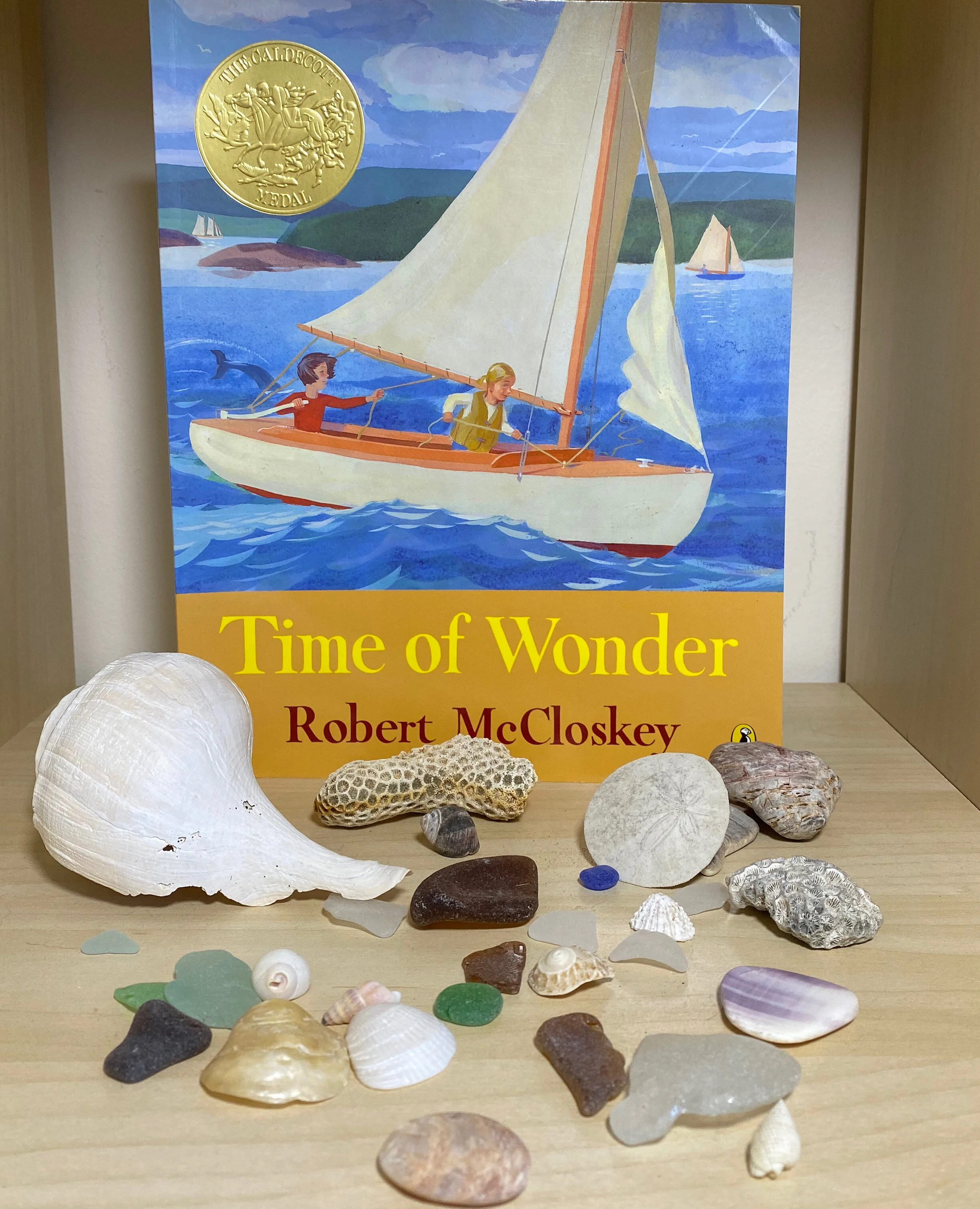Maria Sibylla Merian: Where Science and Art Meet
Today is International Day of Women and Girls in Science. There are SO MANY amazing women and girls to celebrate, so it’s hard to choose just one! But today, I picked Maria Sibylla Merian because I love how her science and art come together to show why close observation of nature, exploration, and recording what you find are some of the key skills we need today to preserve our natural world!
I first learned about Maria when I found the book Maria Sibylla Merian: Artist | Scientist | Adventurer by Sarah B. Pomeroy and Jeyaraney Kathirithamby in my local bookstore last winter and I was fascinated by her story! Maria was born in 1647 in Germany and her story is very unusual for her time period.
Maria’s stepfather was an artist. She learned to draw and paint in his studio. What she was mostly interested in painting, however, was the natural world around her. So, at the young age of just 13, she collected eggs, bugs, and plants to learn more about how the world works. She detailed how bugs changed over time. She was specifically interested in butterflies and moths, detailing how a caterpillar becomes a butterfly (or a moth). In her drawings, she would show the change over time. Today, we call the study of bugs entomology. But, in the late 1600s, this was a new field of science and young Maria was a pioneer.
In her drawings, she established a 3-part artistic and scientific method:
she collected and studied live insects;
she documented her research with drawings and notes;
and then she combined what she learned into a drawing (later, an engraving) that showed the insect’s developmental stages next to the plant it used for food.
She published her observations and drawings in several books and also prints of her pictures. Today, this is some of our earliest and most important natural history.
Her first book was a study of caterpillars, moths and butterflies. But, later in her life, she traveled to Surinam where she documented the natural life she found there. For a woman in the 1600s, traveling from Germany to Surinam was dangerous, expensive, and unusual. Women did not travel and adventure often; they most certainly didn’t very often do it by themselves without their husbands, brothers, or other male family members. Maria bravely traveled with her daughter because she was determined to learn more about the natural world and the new and different plants and animals of the Americas.
I particularly like these illustrations. In the first, you can see the development of a moth over time. The next illustration shows a silkworm on a coral bean tree. The one after that is really incredible. The illustration is of a frog called the pipa pipa. Those bumps on the frog’s back are actually fertilized eggs. When the tadpoles hatch, they are fully formed! Can you imagine the observation work it took to learn about this frog’s process of birthing young frogs?
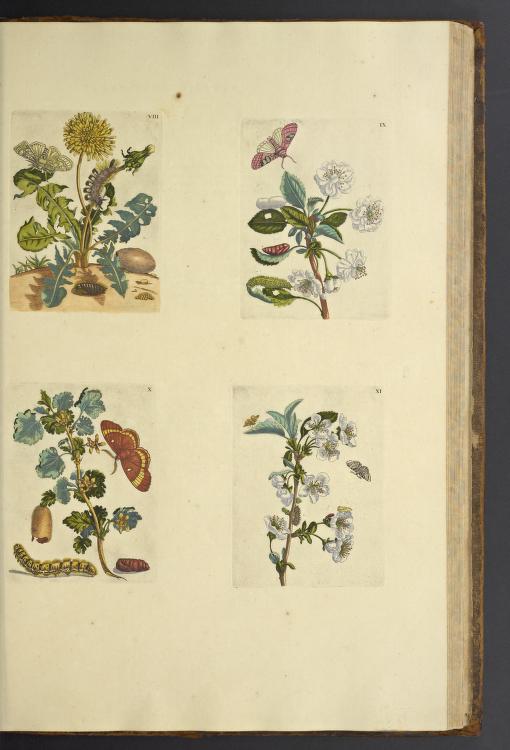
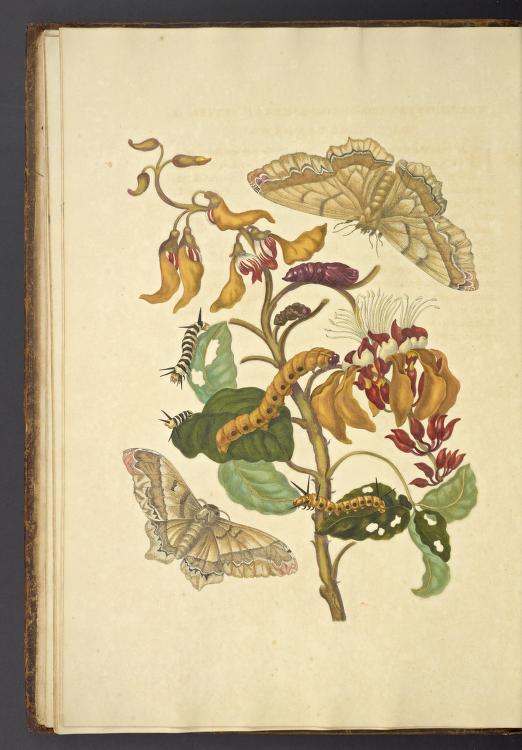
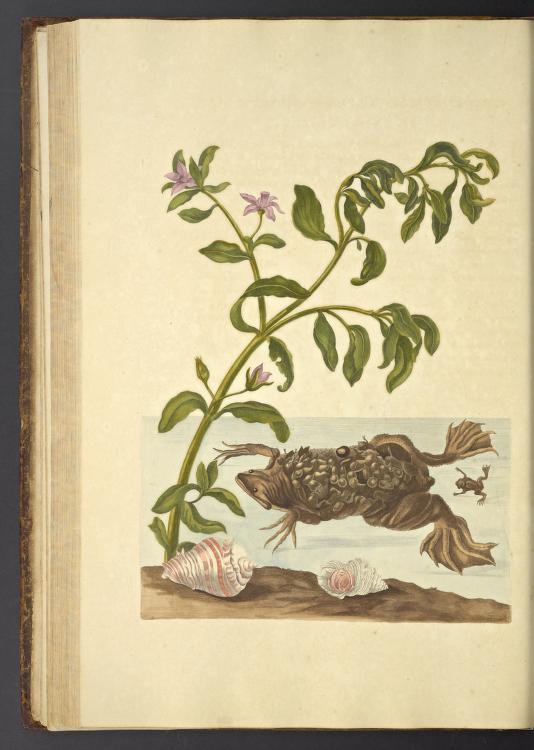
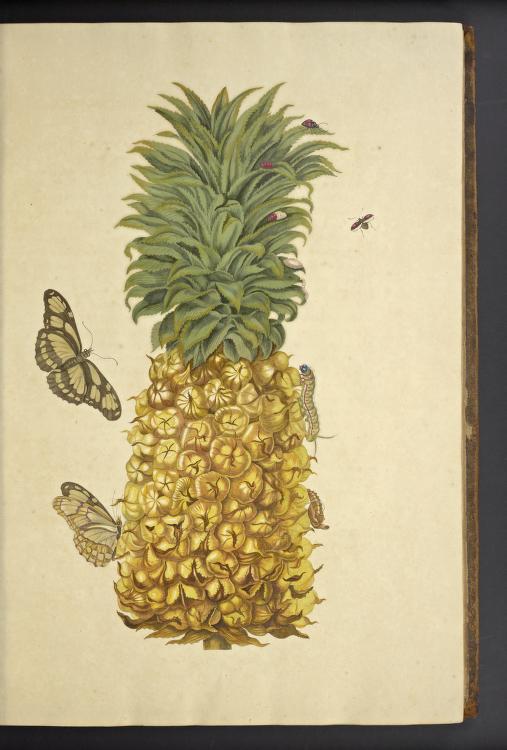
In 1701, Maria also did a study of how a frog develops, from an egg to a tadpole to a frog. In her study book, she wrote:
“In April, the frogs laid a large quantity of little eggs. I cut open the female and found in her a womb like all other animals have. They do not give birth through their mouths, as many writers have thought. In the womb, I found a quantity of such seeds as were seen in the female. In early May, I took some of the frog eggs I had found in a frog’s dead body at the water’s edge. I dug up some young grass with earth and put it into a bowl. I poured water on it, and threw in bread. I did this every day. After several days the little black specks began to show life and fed on the white slime that surrounded them. Later they grew little tails so that they could swim in the water like fish. In the middle of May they developed eyes. Eight days later two little feet broke through the skin. After eight more days another two little feet broke through the skin towards the front. They looked like little crocodiles. Then the tail rotted away. They were real frogs and jumped onto land” (Pomeroy and Kathirithamby 38).
Today, we are very familiar with how a tadpole becomes a frog. This is something that is illustrated in lots of science textbooks. But, can you imagine discovering that all on your own? And, documenting the process as it happens by writing down and drawing each stage?
Maria Sibylla Merian was an amazing observer. She really watched the world around her and took the time to observe the natural world. Our understanding of bugs, butterflies, and the amazing plants and animals of Surinam begin with Maria’s amazing life and her study of her world.
A Study Book
During her life, Maria collected her scientific observations and illustrations in a study book. She started it when she was 13 years old. She made drawings and notes about more than 318 kinds of natural life in her book.
What would you keep a study book about? How would you organize it?
Happy International Women and Girls in Science Day! I hope you can find something you are interested in to study. Think about how it works, what it does, and how you can learn more about it by observing steps and stages. What can you share with our world, just like Maria did?
Want to read more?
Maria Sibylla Merian: Artist | Scientist | Adventurer by Sarah B. Pomeroy and Jeyaraney Kathirithamby
The Girl Who Drew Butterflies: How Maria Merian’s Art Changed Science by Joyce Sidman
Look at Maria’s The Insects of Surinam (1719). Although it’s published in Dutch, you can see all of her beautiful drawings, even if you don’t speak or read Dutch!
https://archive.org/details/gri_33125011169527 (Published in Dutch, but you can see all of her beautiful drawings, even if you don’t speak or read Dutch!)
Look at Maria’s The Caterpillar Book (1730. Although it’s published in Dutch, you can see all of her beautiful drawings, even if you don’t speak or read Dutch!
https://archive.org/details/gri_33125008530400/page/n4
In the mood to do something creative? Try these coloring pages from The Getty Museum! Ask a parent, guardian, teacher or librarian if you need help downloading the pages!
http://www.getty.edu/art/exhibitions/merian/fun.html
(PS: I think supporting our local bookstores and local libraries is GREAT! I got this book at The Bookworm!





